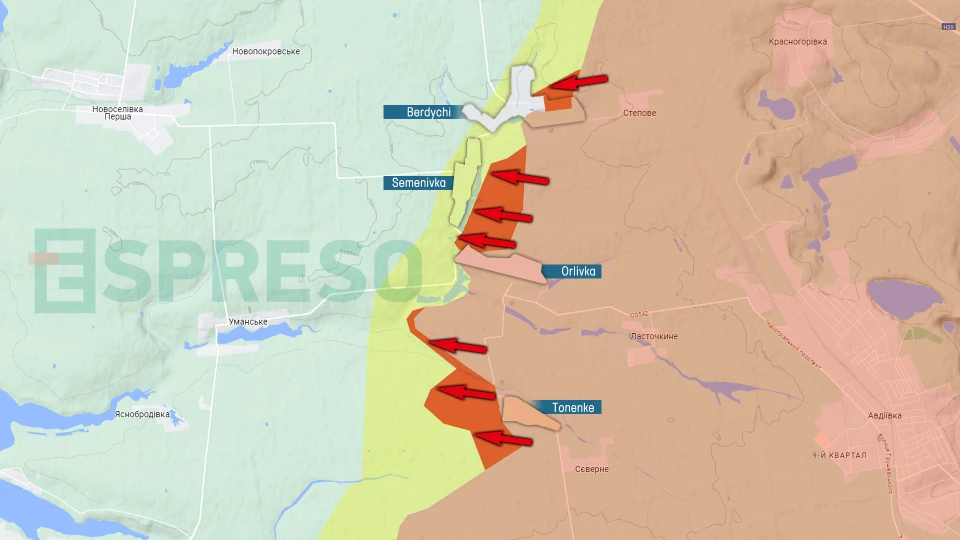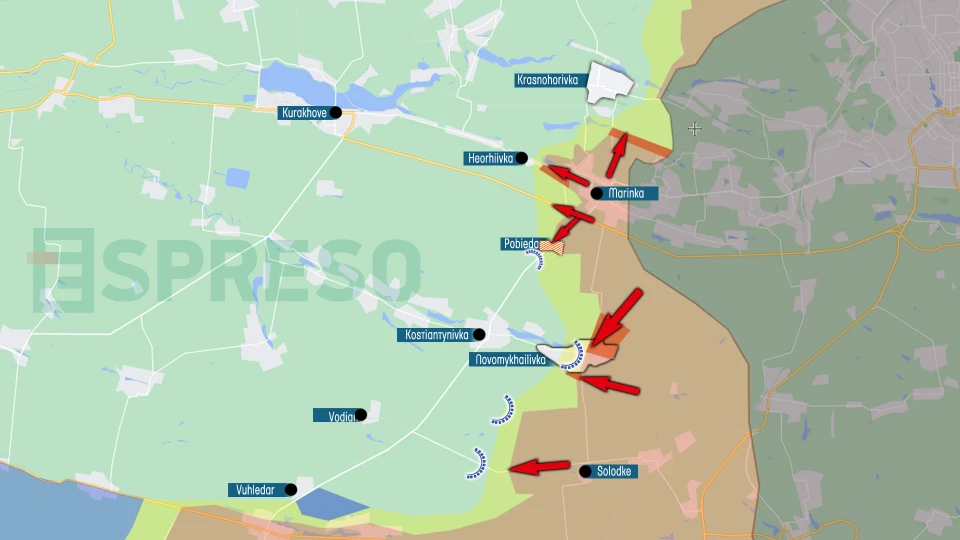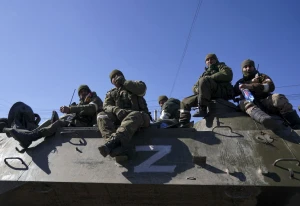
Is Russia capable of launching new offensive? Serhiy Zgurets column
The Russian Federation persists in offensive operations across a broad front, striving at all costs to advance towards the borders of Donetsk and Luhansk regions
Russia's potential new offensive
Today, our focus is on the front-line situation. There were 53 combat clashes throughout the day, a decrease compared to usual, roughly one-third to half of the previous week's activity, depending on the day. However, this represents more of a brief pause for the enemy to regroup, as they continue their offensive actions across a wide front, and the objective of reaching the borders of Donetsk and Luhansk regions remains unchanged.
Throughout last week, foreign media outlets discussed the possibility of an enemy assault on Kyiv, Kharkiv, and Sumy as early as this summer. Our military and political leadership also indicated that Russia is gearing up for an offensive, either in spring or early summer. This has sparked various discussions among our viewers and citizens. Let's turn to Viktor Kevlyuk, a military expert from the Center for Defense Strategies and a reserve colonel of the Armed Forces, to assess whether the enemy truly has the capability and intent to initiate new offensive actions.
The expert from the Center for Defense Strategies stated that he personally sees no feasible way for the enemy to launch an offensive operation at this time. He also doubts that the Russians have the necessary resources or readiness to conduct such actions, neither in the spring nor in the summer. Regarding Kharkiv, it remains a vulnerable target for Russian missile strikes, which could incite panic and social unrest. However, Kharkiv is a large city covering 350 square kilometers, unlike Bakhmut, which occupies only 47 square kilometers. To capture Bakhmut, the enemy required a force of 80,000 troops, resulting in significant casualties. Considering these figures, it's evident that a considerable number of troops would be needed to mount an offensive operation to capture Kharkiv, a force that the enemy does not currently possess in Ukraine.
The officer highlighted that the situation in Sumy differs somewhat. The enemy is using Sumy and the Sumy region as a training ground to prepare its reinforcements in conditions resembling actual combat. They are testing their aerial attack capabilities here, taking advantage of the proximity to the front line and Ukrainian air defense. By doing so, they aim to minimize risks for their aircraft crews and evaluate equipment for future use in battle. Any reports indicating the formation of a strike group in the Sumy direction would signal a concerning development for Ukraine. Currently, there are no such reports, leading to the conclusion that the enemy is unlikely to open new fronts either in spring or summer.
Frontline update
According to a reserve colonel in the Armed Forces of Ukraine, the 2nd and 41st Combined Armies of Russia are actively engaged in combat with the enemy in the Avdiivka direction. The group received additional reinforcement from the 90th Tank Division.

On March 30, the Russian Federation's 6th tank regiment launched an attack, marking the first such incident since October last year. The enemy targeted Defense Forces in the Tonenke area with a tank battalion accompanied by a mechanized company, totaling 36 tanks and 12 infantry fighting vehicles on the battlefield simultaneously. Although the enemy made some progress to the northwest of the village, Tavria units successfully repelled the assault, destroying 12 tanks and 8 infantry fighting vehicles. Intense fighting continues in the vicinity of Berdychi, south of Nevelske, and near Pervomayske. Meanwhile, positional battles persist in the areas of Semenivka and Umanske. The strategic goal remains to establish conditions for the encirclement of Toretsk, advancing north towards Chasiv Yar and extending as far west as Avdiivka.
The military reports that the 8th Combined Arms Army and the 1st Army Corps are engaged in combat operations in the Novomykhailivka area along the Novopavlivka direction. Their objective is to flank the Defense Forces group in the Vuhledar area, potentially threatening encirclement or compelling our troops to retreat westward. Fighting persists near Novomykhailivka and Heorhiivka, while positional battles occur in Krasnohorivka and Pobyeda. Despite occasional enemy advancements of 100-200 meters due to their numerical advantage, they frequently lose ground gained. The situation remains unfavorable for all parties involved.

Regarding the Ukrainian defense activity, it's active on both fronts, but it's not the conventional kind of activity. They're employing new tactics and tools like drones and small electronic warfare stations. There are several impressive instances of coordination between drones and artillery within the Operational and Strategic Forces "Tavria". In essence, they're fighting back effectively.
An officer provided insights into the situation in the Kupyansk-Lyman area, highlighting the formation and deployment of enemy strike groups there. Hostilities began around six months ago. The most formidable enemy group, known as "West", consists of three armies, including a tank army, which is the only one in Europe. This group aims to capture Kupyansk and advance to the banks of the Oskil River, but it's currently stalled in Synkivka without making progress. The group's struggles likely stem from significant losses of tactical officers and non-commissioned officers in previous battles, resulting in subpar tactical maneuvers by small units and a lack of success.
Regarding the Lyman direction, where the enemy group known as "Center" operates, it's worth noting that two combined armies, each with three brigades, have been moved from near Lyman to the Avdiivka direction. Consequently, the "Center" group, though smaller in size, has fewer operational reserves but also operates on a narrower front. Its focus is on capturing Lyman and making efforts to partly eliminate the Defense Forces' bridgehead on the Chornyi Zherebets River. However, no progress has been made in either direction. These actions should be viewed in a broader context—they are preparatory operations laying the groundwork for a future attack on the Slovyansk and Kramatorsk areas, likely to occur toward the end of summer. Therefore, the enemy is not attempting to be active but rather conserving forces and preparing for an operation expected in about six months.
The military analyst stated that the enemy's actions are aimed at preparing for a strategic offensive operation, likely to occur in late summer or early autumn. These actions are operationally focused and could involve striking the left flank of the Zaporizhzhia front to alter its orientation from east to west and capture the Slovyansk and Kramatorsk areas. Everything currently happening is in some way related to the preparation for these two significant offensive operations. Therefore, the decrease in enemy activity does not indicate exhaustion but rather a stage of resource accumulation and the formation of operational and tactical conditions for future actions.
Kevlyuk points out that Ukraine's defense stability faces two critical shortages: personnel and ammunition. Both deficits can be addressed, but restarting the mobilization process is essential. Recruiting centers, a gentle mobilization approach, and an audit of the Armed Forces won't effectively solve the sharp increase in troop numbers. The state refrains from employing strict coercion, which is the most effective tool available. Without a change in perspective, significant challenges may arise if the enemy launches large-scale military operations in the second half of the year.
- News












































